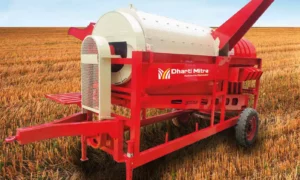Sustainable farming is becoming increasingly important as global temperatures continue to rise and the consequences of climate change are felt worldwide. Regenerative agriculture – an emerging agricultural system that seeks to reverse the impacts of industrial production practices while enhancing agricultural production – may be crucial in meeting these sustainability goals.
This article will discuss the key benefits of regenerative agri, including reduced carbon dioxide emissions from traditional methods and increased access to sustainable farming credit to help farmers adopt more advanced technologies. We’ll also explore how governments can incentivize farmers and provide guidance on implementing this method into existing efforts for meaningful results. By diving deeper into environmental impacts and economic opportunities related to regenerative agriculture, John Gessin will share why investing in green agri initiatives makes both environmental and financial sense over time.
Introducing Regenerative Agriculture
Regenerative agriculture is a growing movement transforming how we think about farming and sustainable agriculture. At its core, regenerative agriculture aims to enhance soil health, increase biodiversity, and improve ecosystem services by combining traditional farming techniques and innovative practices. This holistic approach leverages the power of nature to work in harmony with the environment rather than against it. Unlike traditional agriculture, which often relies on pesticides, synthetic fertilizers, and other harmful chemicals, regenerative agriculture seeks to create a symbiotic relationship between crops, livestock, and the soil. By focusing on long-term solutions prioritizing soil health and biodiversity, regenerative agriculture is paving the way for a more sustainable and resilient food system for generations.
Carbon Emissions and the Impact of Regenerative Agri on Climate Change
John Gessin reiterated that the world is facing a climate emergency, and carbon emissions are a major contributor. Regenerative agriculture can play a role in fighting climate change. Farmers can reduce carbon emissions and even sequester carbon in the soil by adopting regenerative practices. This can help lessen the impact of climate change. Furthermore, regenerative agriculture improves soil health, enhances biodiversity, and increases resilience against extreme weather events. It’s time to take action and support regenerative agriculture to combat climate change.
The Benefits of Using Sustainable Farming Practices
The need for food is growing. However, we now face the challenge of producing enough food while preserving our planet’s health. This is where sustainable agriculture comes in. By adopting sustainable farming practices, farmers can protect the environment, mitigate climate change, and ensure they can produce food for generations. Using techniques such as crop rotation, organic farming, and integrated pest management, farmers can improve soil quality, reduce water usage, and avoid harmful pesticides. In addition to benefiting the environment, sustainable farming practices can lead to healthier and more nutritious food. By supporting sustainable farming and consuming sustainably grown produce, we can help build a better world for ourselves and future generations.
How Financial Institutions are Utilizing Sustainable Farming Credit
More and more financial institutions are looking towards sustainable farming credit to not only make a positive impact on the environment but also to help farmers and farming communities thrive. According to John Gessin, sustainable farming credit programs offer a variety of benefits. Additionally, these programs can increase farmers’ productivity and profitability and reduce environmental impact. By working together towards a common goal of sustainable farming practices, financial institutions, and farmers can create a better future for all.
Exploring Existing Programs and Initiatives to Help Farmers Go Green
With concerns about the environment growing, many farmers are looking for methods to reduce their carbon footprint and adopt more sustainable practices. Luckily, numerous existing programs and initiatives are aimed at helping farmers go green. These programs offer guidance from reducing pesticide use to implementing renewable energy technologies. Farmers can help protect the environment, potentially lower operating costs, and improve their yields by participating in such programs. Whether a small family farm or a large commercial operation, resources are available to help you become a more sustainable agricultural producer.
What’s Ahead for Regenerative Agriculture and the Future of Sustainable Farming Credits
As the demand for sustainable and organic farming practices continues to grow, the future looks promising for regenerative agriculture. This farming method focuses on building soil health, increasing biodiversity, and promoting ecosystem services to create a self-sustaining farm environment. Not only does regenerative agriculture benefit the environment, but it also has the potential to increase yields, decrease input costs, and improve farmers’ livelihoods. With ongoing research and innovation, the practice is continuously evolving, offering exciting opportunities for farmers and consumers alike. The rise of regenerative agriculture highlights the need for a more holistic approach to farming as we work towards a more sustainable and resilient future.
Final Thoughts
Regenerative agriculture is a critical component in the future of sustainable farming and climate-change mitigation. As governments and other organizations push for more renewable practices, it’s important to understand the opportunities and advantages of it, such as reduced dependence on fossil fuels, better soil health, and improved crop yields. With new initiatives from financial institutions to bring funding opportunities to farmers interested in transitioning to sustainable farming practices, more resources are becoming available for producers worldwide. It is clear that for the sake of our planet and our livelihood, we must move towards healthier, more sustainable forms of food production if we are going to make an impact in safeguarding our future generations. There is no doubt that regenerative agriculture will continue to drive a shift towards greater environmental sustainability. The exciting prospects will ensure its continued presence in shaping our agricultural landscape for years.



































